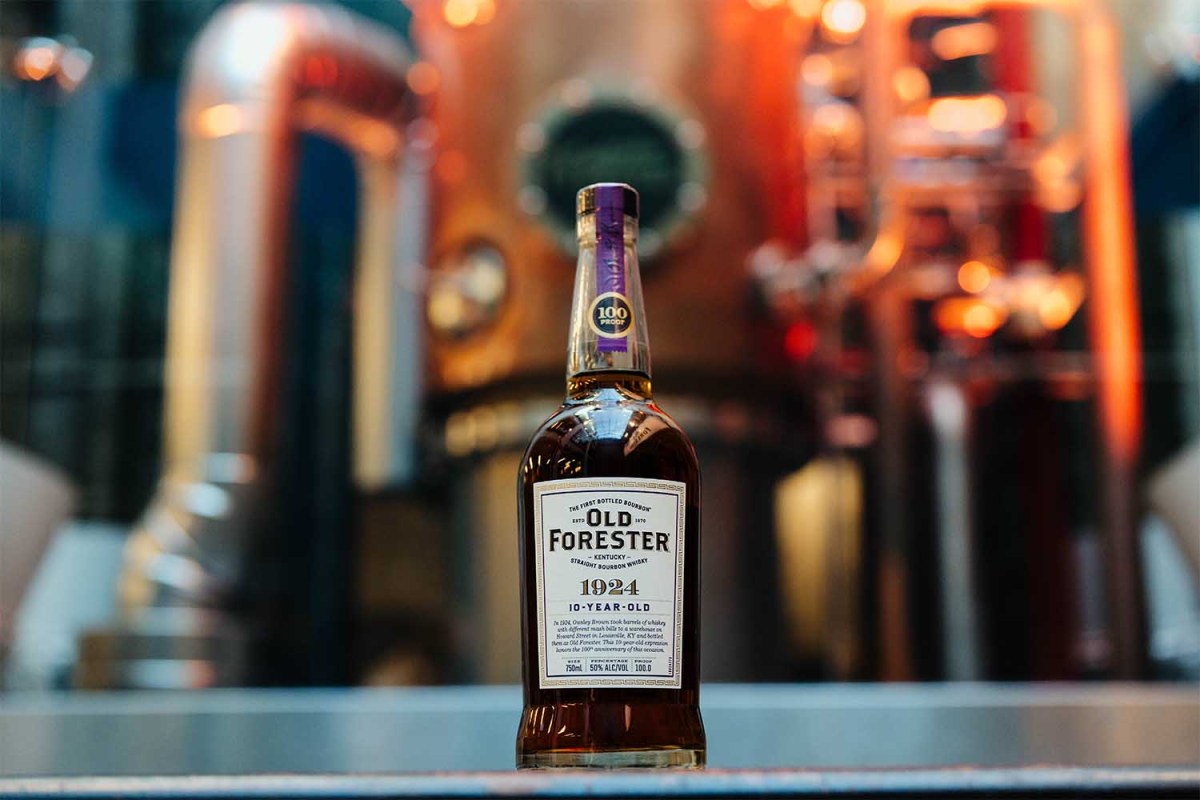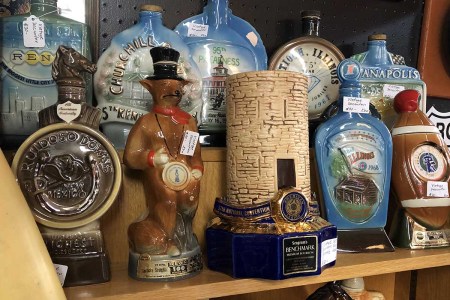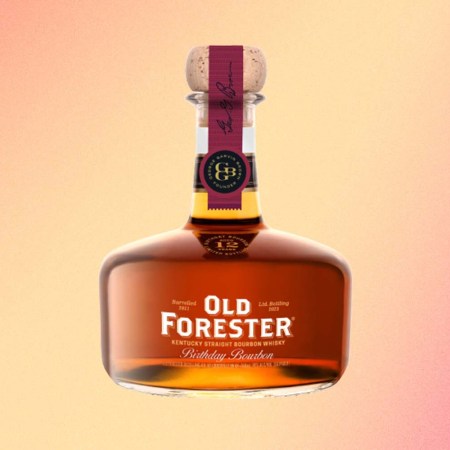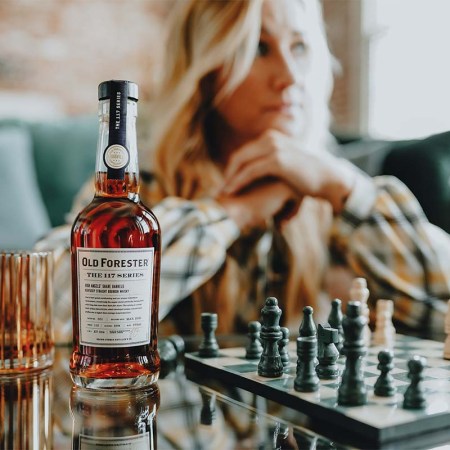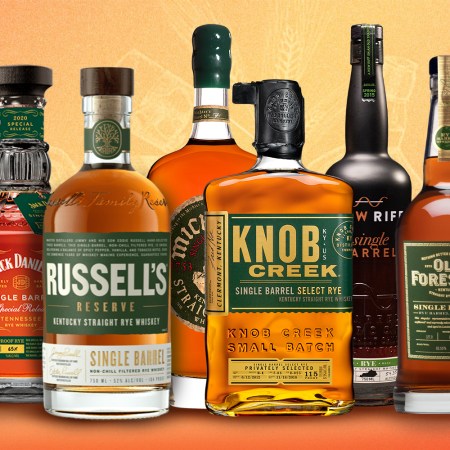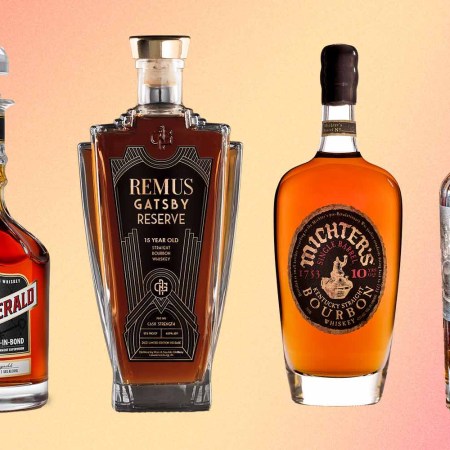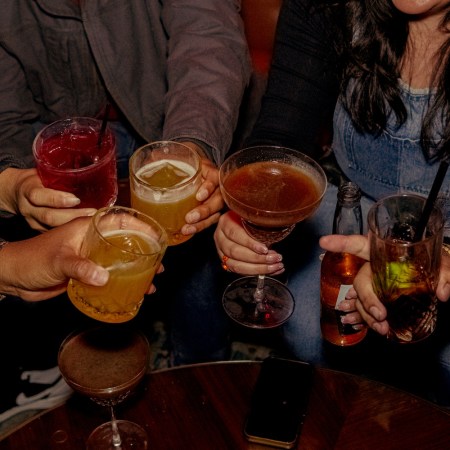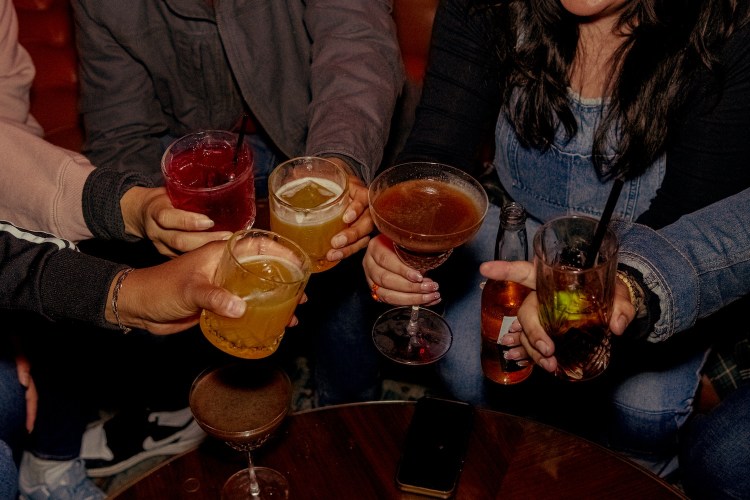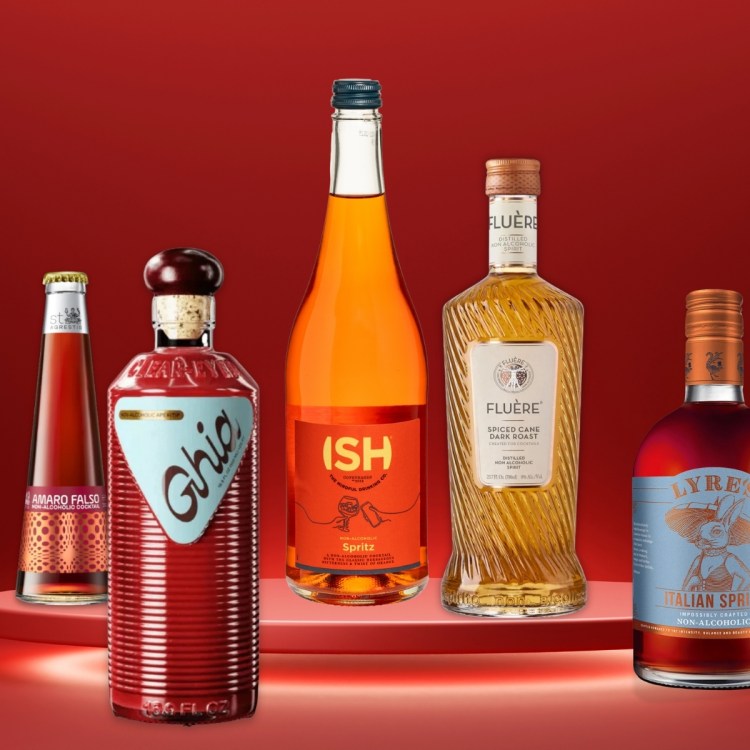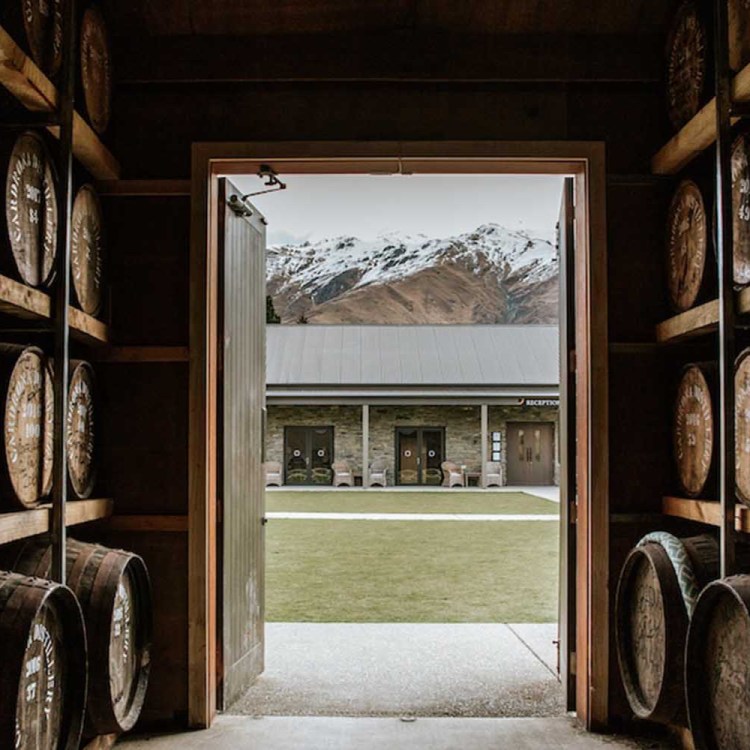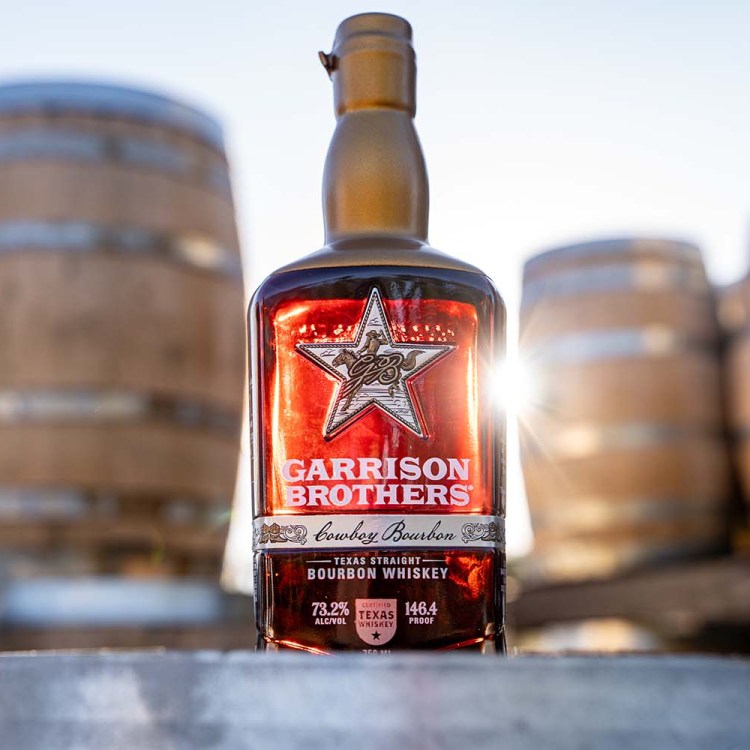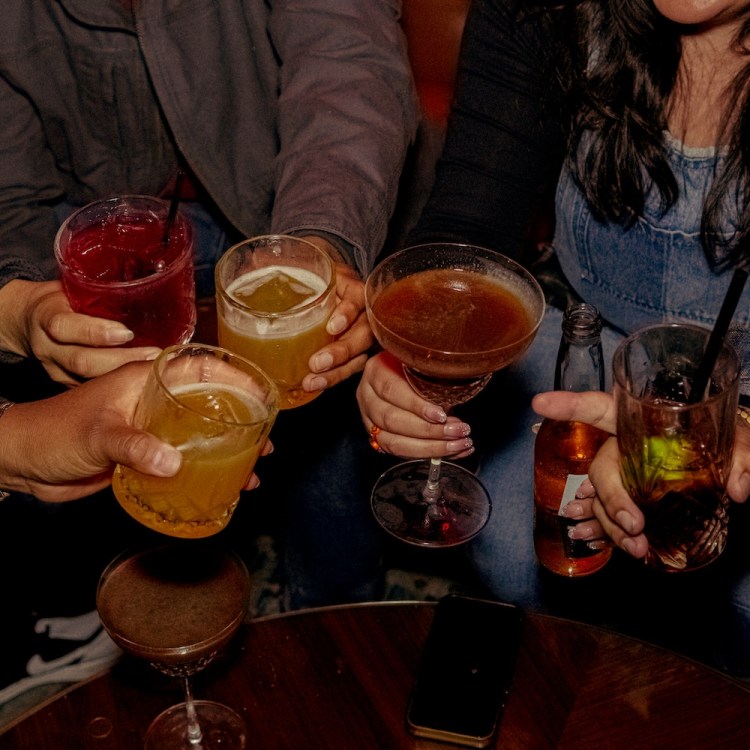Besides taste and excellent value, the biggest selling point in Old Forester’s 154-year history comes down to consistency. The Louisville, Kentucky, distillery created the first bottled bourbon for, yes, consistency’s sake. And they’ve made whisky (they spell it without the “e”) before, during and after Prohibition in relatively the same manner. Most importantly, that whisky was and continues to be built from the same ingredients in the same proportions.
“We use the same mash bill for every expression of Old Forester,” Melissa Rift, Old Forester’s Master Taster, told me as we toured the brand’s Whiskey Row distillery this past November. “Everything starts as the same distillate — 72% corn, 18% rye, 10% malted barley. You’ll get a sweetness coming from the corn, some spice and aromatics from the rye. And we’ve got our proprietary yeast strain, which we use for every expression of Old Forester.”
Of course, there are exceptions outside of OF’s bourbon; obviously, Old Forester’s rye whisky has a majority of rye grain in its makeup. But every modern expression or limited-edition release from the Brown-Forman brand has kept that mash bill intact.
“Old Forester is presented across our various expressions based on barrel selection, age, proof presentation and processing,” says Chris Poynter, Brown-Forman’s public relations and partnership manager. “That’s how we focus and present the unique flavors. I think that shows our expertise in presenting the same whisky in a different way. It highlights our 154 years of experience.”
However, when conceptualizing the fifth and newest entry in Old Forester’s Whiskey Row Series — which chronologically celebrates “distinguishable moments in the brand’s history” — the distillery’s team decided to emphasize a brief and somewhat contentious moment in the brand’s history: Prohibition, when Brown-Forman was one of only six companies granted medicinal whiskey licenses.
“Prohibition was the first time and only time really in our history that we’ve kind of deviated from what we do normally,” Rift says. “We couldn’t be producing alcohol on a regular and legal basis. You had to sell it medicinally and only what you already had stocked in warehouses. By 1924, we started looking to other brands that hadn’t been granted those medicinal whiskey licenses so that we could bolster our stocks.”
It became the first and only time in Old Forester’s timeline when they bottled other whiskies under the Old Forester name. “It’s really the first time that we deviated from our flavor profile and the production processes that we were always using pre-Prohibition — and that we went back to using post-Prohibition,” Rift says.
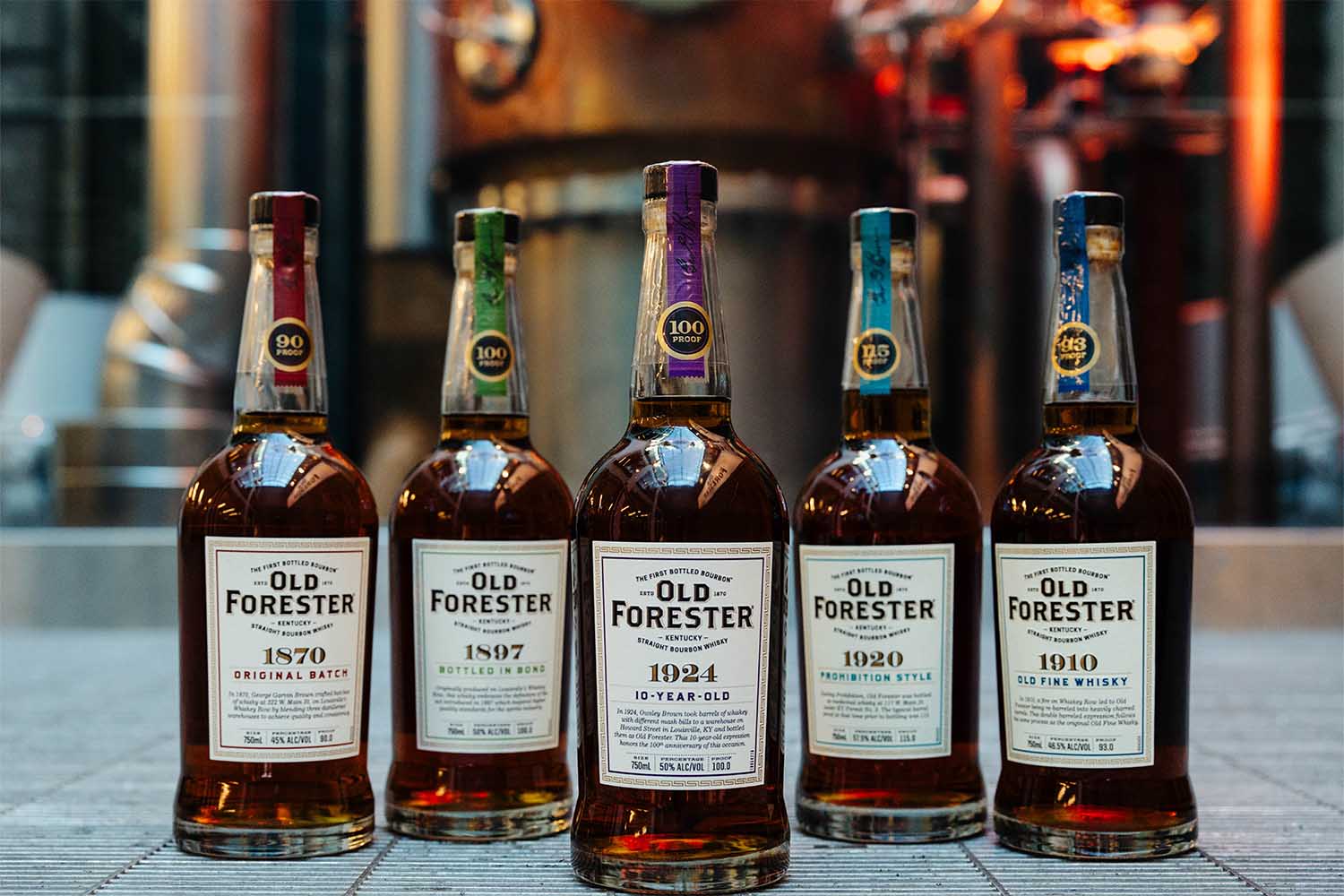
With that little historical hiccup in mind, the distillery set out to offer something unique: a new mash bill, which you’ll find in the just-released Old Forester 1924. It’s also the oldest-aged bourbon from the Whiskey Row Series and the first to offer an age statement on the bottle (10 years). Coming in at 50% ABV, the mash bill is 79% corn, 11% rye and 10% malted barley. This isn’t quite a New Coke moment — none of the other core Old Forester releases are going to change — but it does offer a rather striking deviation (or, maybe, re-deviation?) from the norm.
A Bit of Old Forester History
Old Forester is Brown-Forman’s founding brand, launched in 1870 by George Garvin Brown, a pharmaceutical salesman in a time when medicinal whisky was an accepted prescription. The brand was named after Dr. William Forrester, a friend and neighbor of Brown. The spelling of “Old Forrester” was altered shortly afterward.
Brown batched bourbon from three nearby distilleries: Mattingly, Mellwood and Atherton, and sold his whisky in glass bottles to ensure consistency. Most of the brand’s history is neatly outlined in The Whiskey Row series: 1870 (brand launch), 1897 (its first Bottled-in-Bond release), 1910 (a distillery fire that inadvertently helped create the double barrel expression) and 1920 (a nod to the “medicinal whiskies” produced during the beginning of Prohibition).
Throughout its storied history, the distillery has seen its share of ups and downs. “By the time I took over Old Forester in the ‘90s, we were down to about 100,000 cases per year,” says Mac Brown, a retired vice president at Brown-Forman. “I was told to revitalize the brand, which had been in serious decline. Usually, you’d just sort of toss it off, but it’s Brown-Forman’s founding brand and it has a special place in the hearts of all the families involved.”
A slow evolution — based around new packaging, a renewed marketing emphasis and the release of some special premium editions like the annual Birthday Bourbon — helped rejuvenate the brand, which still never really altered the flavor profile to a great degree. (“The ‘90s stuff gets thin,” Rift admits. “I think companies were going lighter in flavor. But the stuff from the ‘50s, ‘60s, ‘70s — it baffles me how similar it is to what we’re putting out today.”)
The Best Vintage Bourbon Arrives in a Novelty Decanter
Ceramic novelty decanters were a way to promote American whiskey during the mid-20th century“We’ve kind of seen the ebbs and flows of the industry, which I think gives us an edge as far as being a historic brand that’s been able to usher in modern relevance,” Rift says. “So we can kind of bridge that gap between where we’ve been and where we’re going versus a lot of brands that have been envisioned in this modern whiskey renaissance. We have a modern-day craft portfolio where we’ve used inspiration from stories in the benchmark years of Old Forester’s history.”
Besides the 117 Series (a limited series where the brand “flexes its innovation muscle” as Rift notes), Whiskey Row (which launched in 2014) and Birthday Bourbon (vintage bourbon, comprised of older whisky barrels all produced on a single day’s production), Old Forester also recently honored a rather fun part of its history with the release of Old Forester Brown-Forman 150th Anniversary, an homage to the bespoke decanters whiskey companies we’re producing in the mid-20th century.
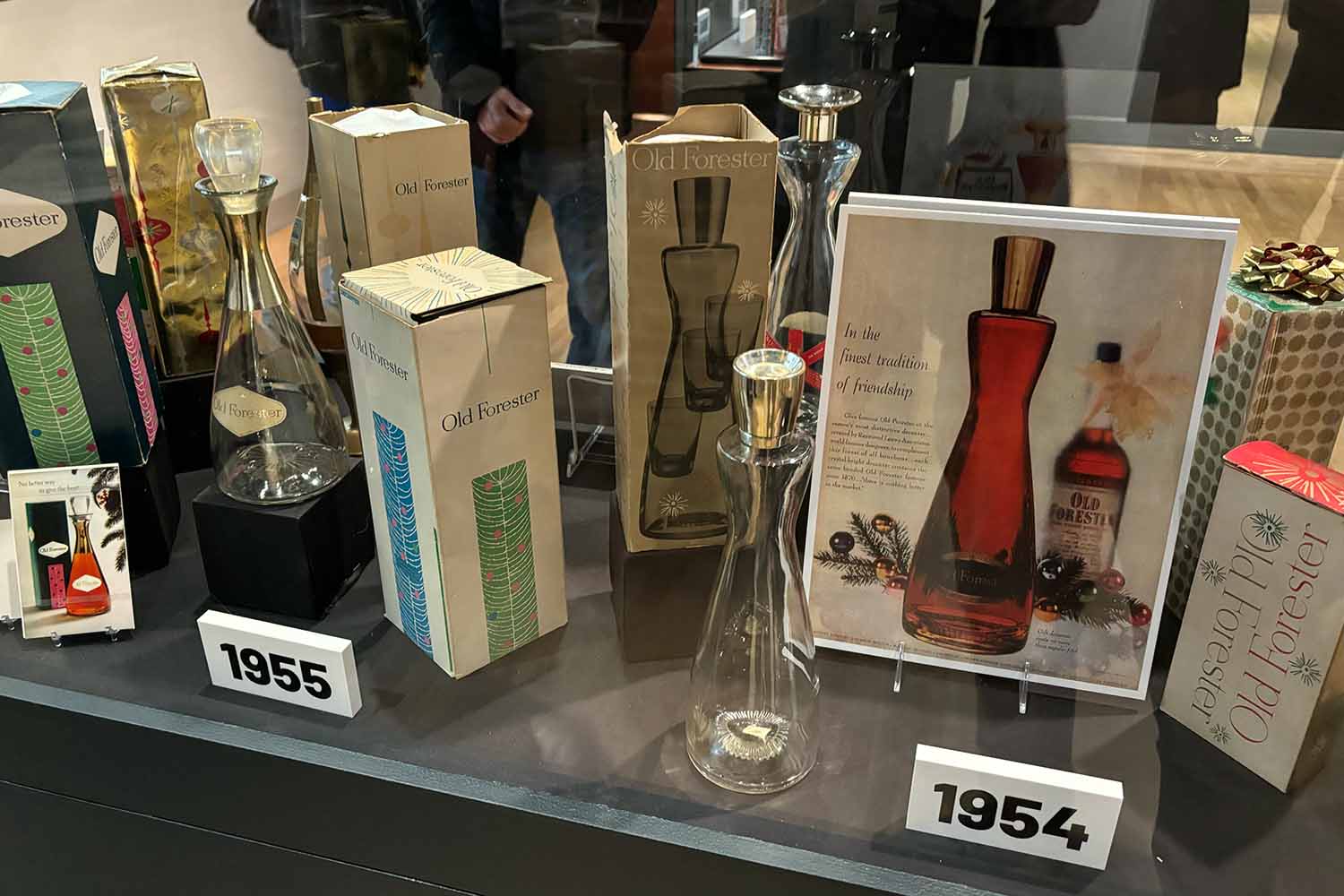
“Jim Beam and some of the other distilleries were doing some kitschier stuff,” says Tim Holtz, a Brown-Forman corporate historian. “Old Forester took a very different tack. When they introduced their first decanter in 1950, the brand was 80 years old. They decided, how do we create a piece of specialty packaging that lives out our story? And so they went a completely different direction and they decided to embrace something modern.” Most of those specialty decanters were designed by Raymond Loewy, who created logos and designs for Shell, Exxon, TWA, Greyhound, Coca-Cola, Lucky Strike and even Air Force One.
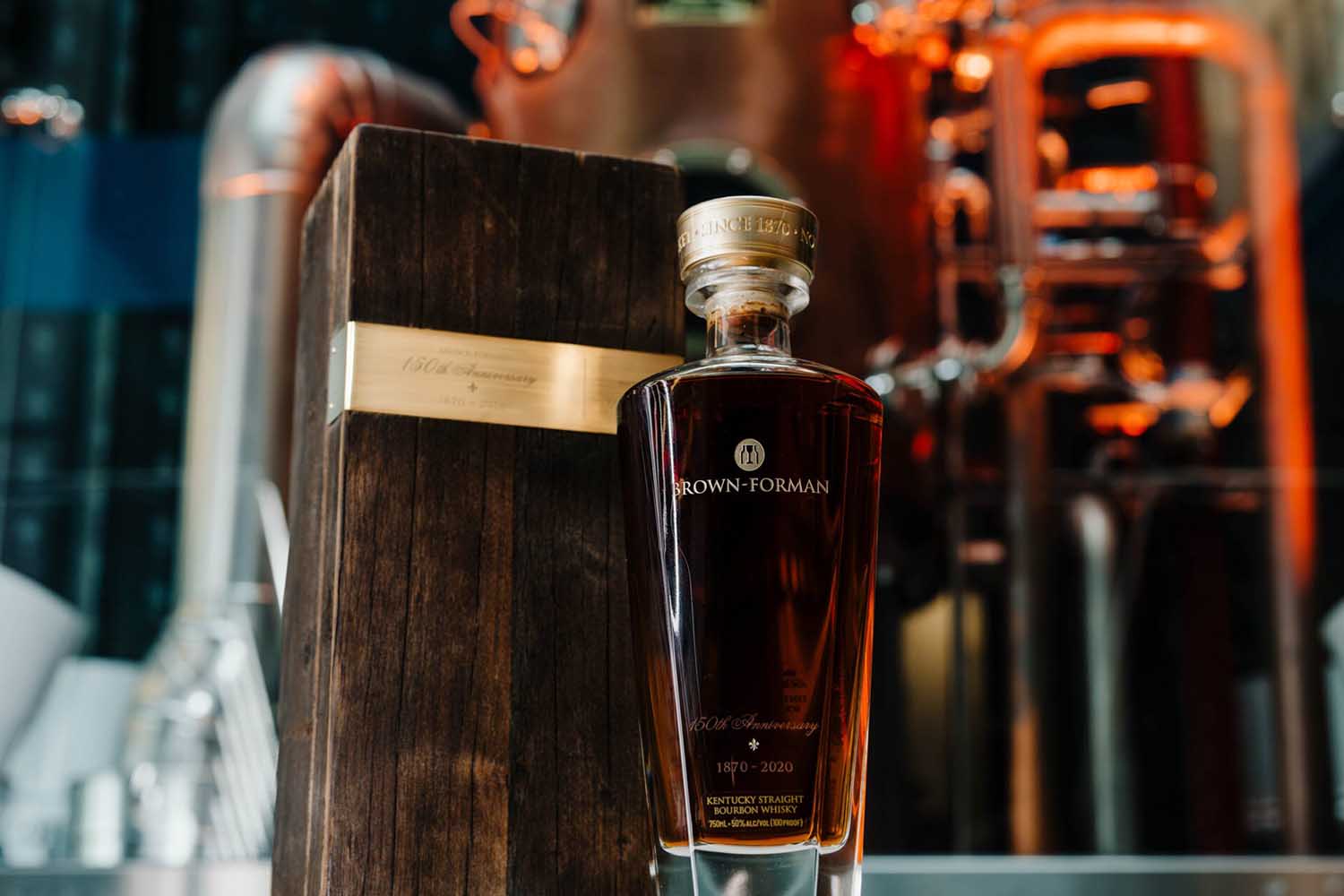
This past November, that 150th decanter was released to celebrate (with a Covid-related delay) the company’s 150th anniversary. Those special 500 bottles, priced at $2,500 a piece, sold out almost instantly. (If you’re curious about the brand’s other mid-century holiday decanters, there’s a special year-long exhibit at Louisville’s Frazier Museum that’s definitely worth a look). I was down in Louisville for that 150th unveiling when the company surprised a few of us with news of 1924’s existence, which has finally been released to the public this month.
So, how does the 1924 taste? With most Old Forester bottles, you’ll find a lot of traditional bourbon notes (vanilla, caramel), plus some rye spice, a candied citrus note, orchard fruits and what Rift calls a “banana nut bread, bananas Foster, banana pudding, kind of undertone.” With 1924, the taste profile is subtly altered: the toast and char of the barrel are a little more forward in the mix. Graham cracker, cherry, butterscotch and almost a Port wine note dominate here, with a little cocoa, some candied pecan, and tobacco and oak tannins on the finish.
It’s a different beast, but a beautiful sipper — and coming in what I consider the bourbon sweet spot of 100 proof (bold but not too hot). “It’s a beautiful sip of whisky,” Rift agrees. “I think it’s a fascinating take on our usual flavor, and we’re proud to put our name on it.”
Every Thursday, our resident experts see to it that you’re up to date on the latest from the world of drinks. Trend reports, bottle reviews, cocktail recipes and more. Sign up for THE SPILL now.
